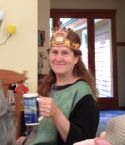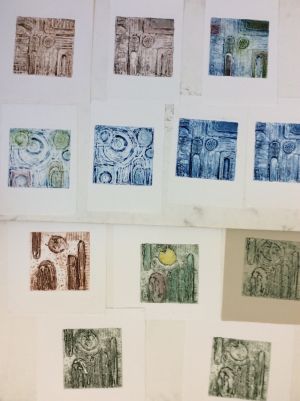Wearing many hats!
I realized yesterday that in the course of that one day I was doing at least 12 duties in my "job" of being an artist. Here is a partial list of the various tasks I attended to yesterday: framed some artwork, created labels for that artwork and attached them, tore paper and prepped it, applied for a direct purchase call, started writing an artist statement, updated my resume, re-wrote my bio, made medium, emailed my rep for more information, emailed some artists that are in a show I am curating (July 2016 in Port Townsend at Northwind Art Center), did some prep work for a class I will be teaching and organized some photo files of my artwork on my computer.
You have probably noticed that not one of those things I did was actually making art. I was reminded yesterday that much of my "job" of being an artist does not involve making art. There are so many other aspects, very important aspects, that need regular attention. Most days are not like yesterday, where I was wearing so many different hats, but I find I have become a list maker and a list checker, and that I must put all deadlines and schedules in my desk calendar in order to make sure they get done. I also have a studio calendar where I note show deadlines and mark off dates I will be out of town so I can keep track of how much time I have left for certain tasks. I mark off the days as they pass, so I can make sure I am leaving enough time for the very important task of making art.
Do you find yourself being a jill (or jack) of all trades? How do you keep track of your work deadlines? Is this something you enjoy or resent? How do you manage to be a working artist in a practical sense?












